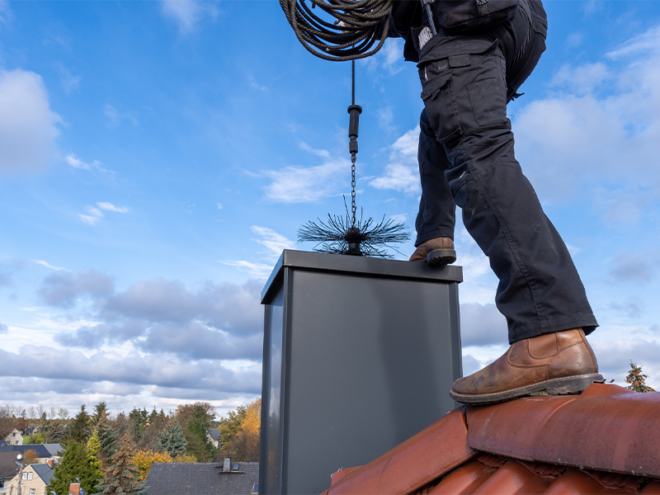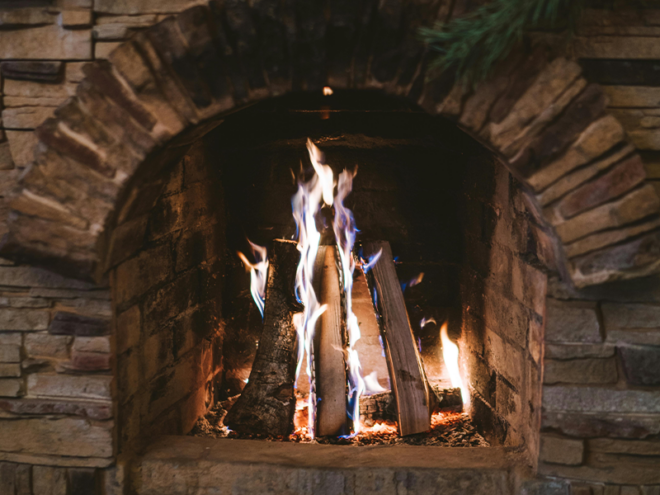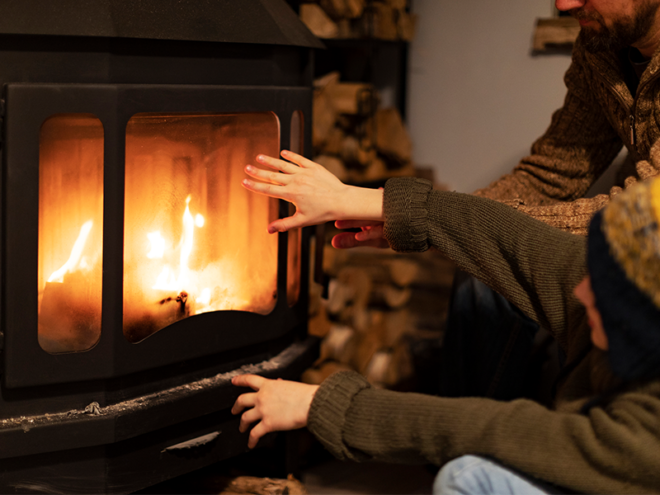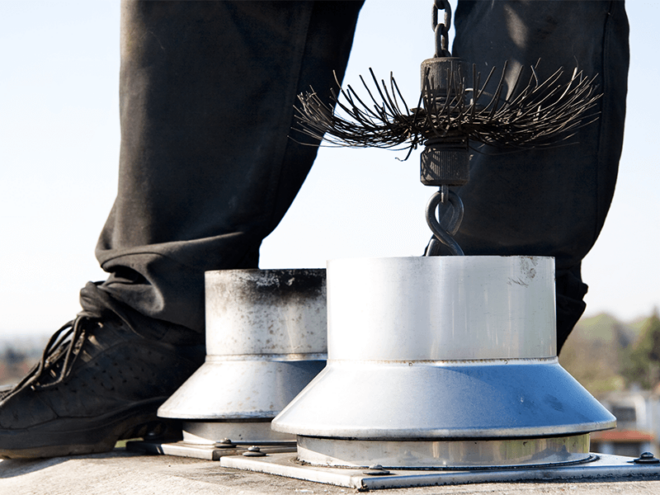The importance of chimney maintenance is often overshadowed by widespread misconceptions. For instance, many homeowners believe that chimney cleaning is only necessary when obvious problems arise or when their fireplace is in frequent use. This notion, however, leaves many chimneys neglected and homes at risk. To ensure their hearths remain safe and functional throughout the year, it is, therefore, important that homeowners learn to distinguish between the myths and realities of chimney cleaning.
Myth #1: Chimneys Only Need Cleaning if They’re Used Frequently
The idea that chimneys only need cleaning after frequent use is incorrect. Creosote, a flammable substance produced when burning wood, can build up quickly, even with limited use, and poses a fire risk. Regular chimney inspections are essential to prevent creosote buildup and ensure safety, no matter how often the chimney is used.
Even a small amount of creosote can be dangerous if ignited. Fire safety experts recommend an annual chimney cleaning, regardless of use, to reduce the risk of chimney fires.
Professional chimney cleaning goes beyond removing soot and creosote. Experts also check the chimney’s structure, helping to catch any issues that could lead to costly repairs or safety risks, even in rarely used fireplaces.
A clean chimney is vital for home maintenance. As such, regular cleanings keep the fireplace safe and efficient, offering homeowners peace of mind, regardless of usage frequency.
Myth #2: Chimney Cleaning Isn’t Necessary if You Use the Right Firewood
Some homeowners believe that using the “right” type of firewood, like seasoned hardwood, eliminates the need for chimney cleaning. This is a misconception, as all wood burning produces some creosote, which must be removed to prevent chimney fires.
No firewood is entirely free from creosote production. While hardwoods may burn cleaner than softwoods, they still contribute to creosote buildup. Regardless of firewood type, chimney maintenance is essential to keep the home safe.
Professional chimney sweeps are trained to spot and remove even small amounts of creosote buildup. They use specialized tools to thoroughly clean the flue, ensuring it’s clear and safe—a precaution that firewood choice alone cannot achieve.
Regular chimney inspections and cleanings are also necessary to check for issues like blockages or structural damage. These preventive steps are critical for home safety, making firewood type a secondary factor compared to the need for professional maintenance.
Myth #3: Chimneys Don’t Need to Be Cleaned if There’s No Visible Creosote
Some homeowners think that if there’s no visible creosote in their chimney, cleaning isn’t needed. This view overlooks the possibility of hidden deposits and early stages of hazardous buildup. Even if creosote isn’t immediately visible, it may still be present and increase the risk of chimney fires.
Creosote can exist in various forms, some of which aren’t obvious to the untrained eye. A professional chimney sweep has the tools and skills to find and remove all types of creosote, ensuring the chimney is as safe as possible.
The absence of visible creosote doesn’t guarantee chimney health. Regular inspections can uncover hidden creosote in hard-to-reach areas that could threaten the chimney’s safety.
Scheduling annual chimney cleanings is, therefore, essential to address any hidden risks and prevent creosote-related issues, regardless of visibility. Ignoring these risks can lead to costly damage and endanger the home’s safety.
Myth #4: DIY Chimney Cleaning is Just as Effective as Hiring a Professional
Some people believe they can clean their chimneys themselves just as well as a professional. This misconception overlooks the fact that professional chimney sweeps have specialized training and tools for safe, thorough cleaning.
DIY cleaning often misses key parts of chimney maintenance, like checking for structural soundness and proper ventilation. Without professional knowledge and equipment, homeowners risk overlooking issues that could lead to fire or structural damage.
Professional sweeps provide a level of inspection that goes beyond basic cleaning; spotting hazards that untrained eyes might miss. This thorough approach helps ensure the chimney stays safe and functional.
While DIY cleaning may seem cheaper, it can leave creosote behind or miss early signs of damage. Thus, hiring a professional is a smart investment for keeping the chimney in good condition and reducing safety risks.
Myth #5: Chimney Cleaning Only Needs to Be Done Once a Year
The idea that chimneys need cleaning only once a year can be misleading. The type of fuel used, how often the fireplace is used, and the chimney’s condition all affect how often cleaning is needed. Homeowners should take these factors into account when deciding on a cleaning schedule.
An annual cleaning might be enough for those who rarely use their fireplace, but frequent users should consider more regular cleanings to prevent creosote buildup. Experts recommend inspections every 50 burns or at the start of the burning season to keep the chimney safe and efficient.
Sticking strictly to a yearly cleaning can overlook specific needs. For example, burning certain types of wood or finding nests and debris may require additional cleaning to ensure safety.
In short, an annual cleaning is a helpful starting point but not a rule. Experts suggest adjusting the schedule based on individual use and safety requirements to reduce fire risks and protect the chimney.
Myth #6: Burning Certain Items Cleans the Chimney
Some believe that burning items like salt-soaked wood or potato peels can clean a chimney, but this is a misconception. These methods don’t effectively remove creosote buildup and can even add to it—increasing the risk of a chimney fire.
Chimney experts agree that using chemical cleaners or burning household items doesn’t replace professional cleaning. These methods can’t reach the entire chimney flue or address hidden structural issues.
Removing creosote requires specific tools and techniques that only professional chimney sweeps have. They perform a complete cleaning that removes creosote and checks for other blockages or damage that could affect the chimney’s safety and efficiency.
Homeowners should avoid these “quick fix” myths. The best way to ensure a safe, efficient fireplace and venting system is through thorough work by certified chimney professionals.
Myth #7: Chimney Cleaning is Only Necessary to Prevent Fires
Many people think chimney cleaning is only needed to prevent fires, but this is an oversimplification. While fire prevention is important, regular chimney care has several other benefits.
Chimney sweeps help prevent dangerous gas buildup too. A blocked or poorly maintained chimney can trap carbon monoxide inside the home, which can be harmful to the health of those living there.
In addition, cleaning the chimney improves heating efficiency. A clean chimney allows better airflow, helping fuel burn more effectively and reducing energy costs.
Regular chimney inspections also help extend the life of the chimney. By catching minor problems early, homeowners can avoid costly repairs while, at the same time, ensuring the longevity of their chimneys.
Let the Truth Keep You Safe!
At Chimney Sweeps of Sherwood Forest, we are experts at ensuring your fireplace remains a safe and cozy part of your home. Our skilled team is dedicated to providing comprehensive chimney cleaning and inspection services to keep your chimney in top condition year-round. Don’t wait for issues to arise—schedule your next chimney maintenance with us today and enjoy peace of mind every time you light a fire.









